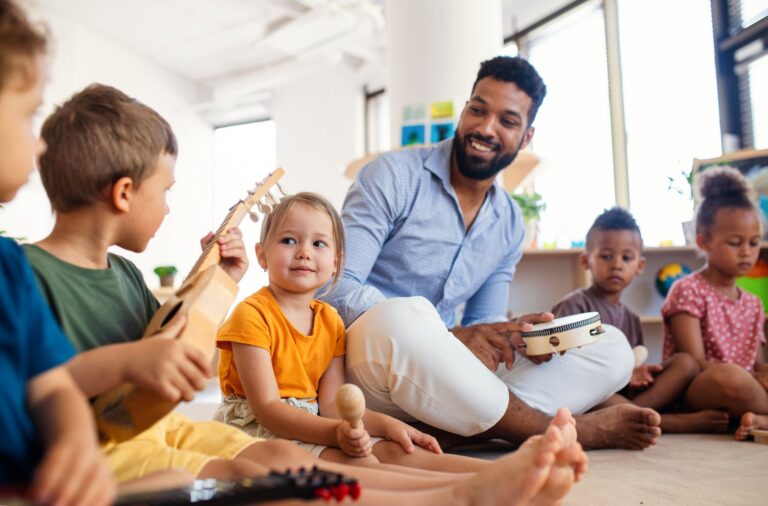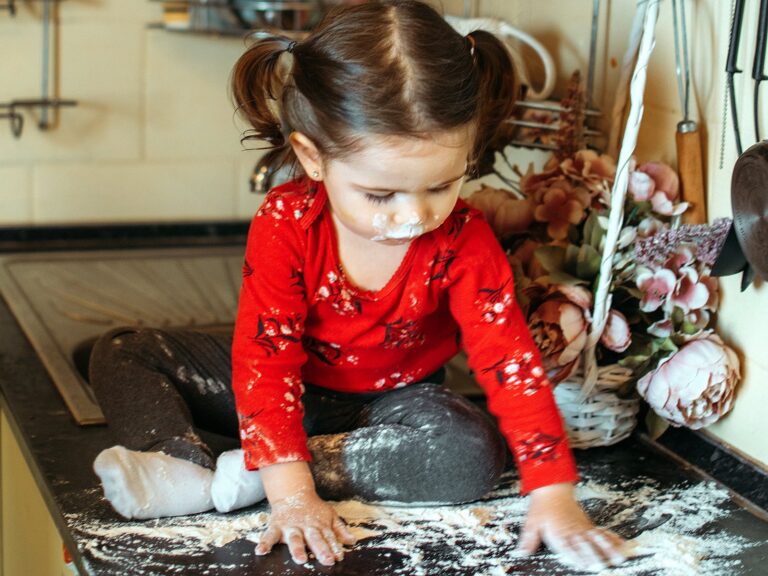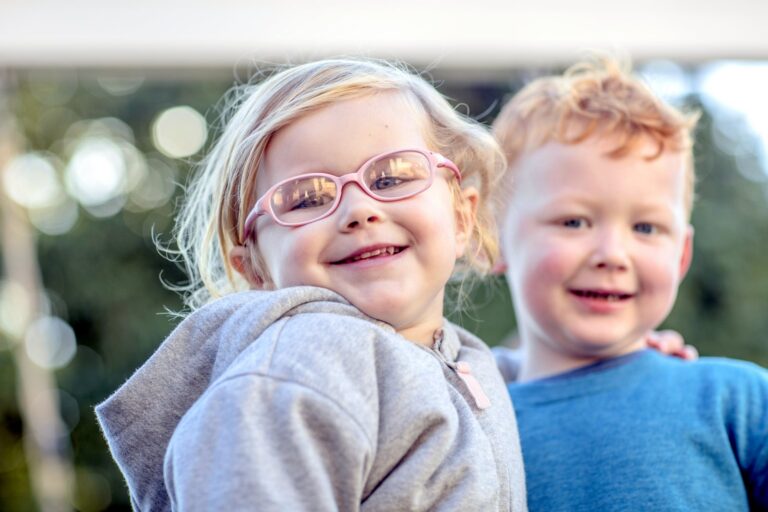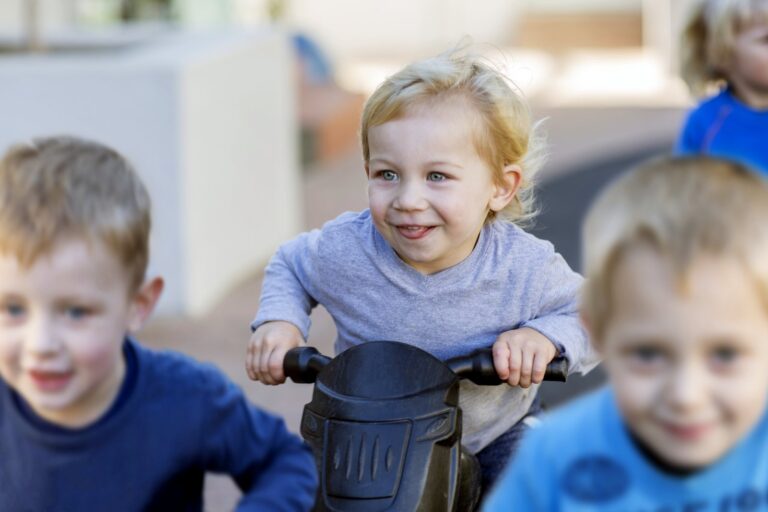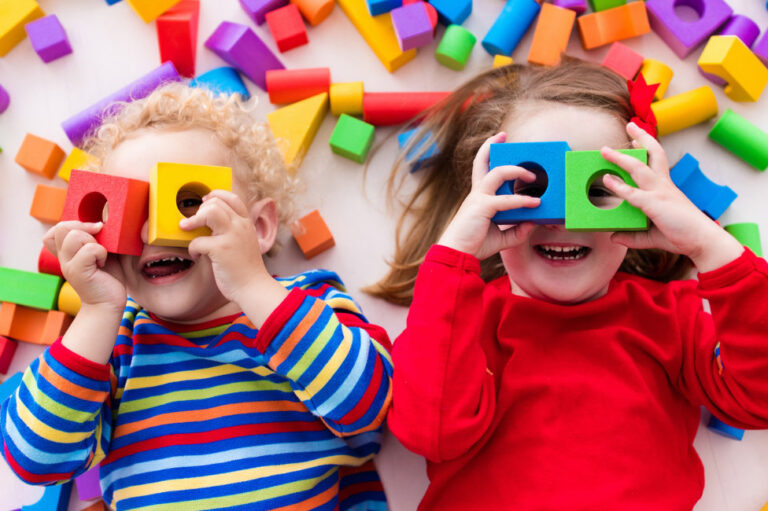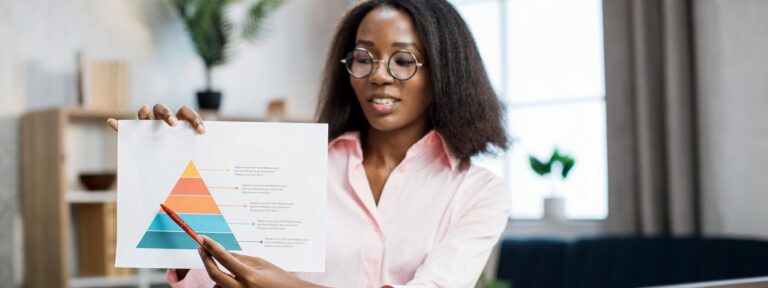Physical environment really describes how the classroom is designed and its layout. It also refers to the learning centres or specific areas designed for different activities. Teachers really want to design the environment by organising its spaces, furnishings, and materials to optimise the learning opportunities and the engagement of every child. Teachers can apply a concept known as Universal Design for Learning (UDL). This approach highlights how important it is that the environment and the materials within it are accessible to all children e.g. it is critical that books are within easy reach for all children to access or that a child who uses a wheelchair can easily move around the entire classroom space.
Another aspect of the physical environment that is the important to be aware of relates to the placement, presentation, and use of visual materials. It is important that all visual materials are at eye-level for all children and that they are clearly presented in the correct learning areas of the classroom.
How to get started:
A classroom that is well-designed should have clear, physical, and visual boundaries. Furnishings and floor coverings should create spaces that are comfortable and that lend themselves to their intended purpose. When arranging furnishings, it’s important to bear in mind the following:
- All children should be within view of adults and adults should be able to be seen by children, to ensure proper supervision.
- Designing areas with spaces for children to work and play independently or in small groups, and to gather as a community is important.
- Establishing clear boundaries to indicate where the centre space begins and ends.
- Consider the location of centres. Centres with high activity levels (e.g., block centres, dramatic play areas, music centres) should not be located close to centres with quieter activities (e.g., listening centres, computer areas).
- Consider the number and size of centres. Make sure there is enough room that children can be engaged without being crowded.
- Create cosy, private spaces. Create safe spaces where children can retreat to rest, observe, and recharge emotionally throughout the day.
Strategies and Approaches to Develop the Physical Environment
Use a Multi-Sensory Approach
Using a Multi-sensory approach is one of the best ways to teach all children, and especially children with special needs. Ensure that learning involves listening and hearing, seeing, touching, and moving. When you try to integrate all the senses into your lesson plans, children with different kinds of disabilities are able to learn.
Allow Optimum Movement & Positioning for Children with Physical Impairment
Children with physical disabilities often find exploring their environment through movement and play challenging. The classroom environment should provide easy access to all spaces and materials and encourage independent exploration and interaction so as to prevent learning deficiencies in all developmental domains.
From a positioning point of view, children with physical impairments work, and write best when their body is positioned correctly. Ensure that the table and work surface heights are comfortable for them. If they are going to be on the floor, provide cushions and pillows to support them. Some children may require special chairs or other furniture to sit and accommodate these into the classroom.
Make your Classroom Wheelchair Accessible
If one of the children in your classroom uses a wheelchair, you will need to make sure that your classroom is wheelchair accessible. The best way to do it would be to actually sit in a wheelchair, go around the classroom and try to do different activities. Ensure that there is enough space around the furniture to manoeuvre the wheelchair. Ensure that the child has a wheelchair-accessible working space. It’s critical that the child has easy access to all spaces and materials, people and other children in the classroom.
Provide Hand Function Adaptations for Games and Art
Children with hand function impairments may require some adaptations to help them participate in games, art and other activities. Add knobs to puzzles, so that all children can use them easily. Similarly, increase the width of the handles of art materials to help children h
Create a Quiet Corner in your Classroom
Many children with special needs may need rest during the day. Some may need a quiet space to work. Create a quiet and comfortable corner in the classroom for such children.
Adapt Teaching Techniques for Visual Impairments
It’s important to bear in mind that children with special needs may have visual and attention deficits. There are some simple adaptations that can be made to ensure that each child is in the best learning environment for them:
- Make sure your classroom is well-lit, preferably with sunlight.
- Ensure that the child with a visual or attention deficit is sitting close to you and the visual aids.
- It’s important that the child gets enough time to absorb the information on visual aids.
- Write in bold and use large prints as much as possible.
- Minimise the amount of information that’s being given at one time. Check that the child has received the information that has been given.
- Supplement visual learning by helping them use the information you have learnt through different activities.
Technical assistance and AAC for children with disabilities
There is an important role to be considered in the use of early childhood assistive technology and alternative and augmentative communication (AAC) with children with physical and communication difficulties.
An assessment can be requested with your local HSE Speech & Language Therapist and or Occupational Therapist to investigate these areas further.
The rise of computer-based software use with children with disabilities has proven that children with disabilities can learn as effectively as their peers with the correct supports and interventions.
Communication considerations
Using pictures in various areas of the room for a variety of reasons can help the child anticipate what will happen next. Pictures can also help them make choices and express what they want to communicate to others.
- Picture Schedule: A picture schedule showing the routine of the day. The child can see what it is time to do in relation to the other times of the day. For example, a child is repeating the phrase, “I’m hungry!” over and over. By using the picture schedule, the teacher can show a picture of a swing above a picture of crackers and juice. This gives a visual cue that first, it is time to play outside and then it is time for a snack. As each event takes place, the picture can physically be removed from the board.
- Picture Exchange Communication System (PECS): This resource will allow users to make and print a wide variety of choices for the child to use to communicate her wants and needs. Offering pictures that show different choices for toys to play with will allow the child to choose whether he wants to play with cars, Legos or puzzles with independence and success.
- Sign Language: Some children can learn basic signs such as, “More”, “All done,” “My turn” and “Stop.”
Social awareness
Children with autism tend not to recognize social norms and may have difficulty with joint interactions and picking up on peers’ social cues. For example, a child may pull at another child’s hair in an attempt to join him in play rather than sitting next to him or asking to have a turn. Ways to model appropriate behaviours include:
- Social Interaction Cue Cards: Simple cue cards can be used as a visual guideline on how to interact with others. Take pictures of the child along with a stop sign to cue the child to stop after an interaction and wait for the other child to respond. Laminate and use these on a consistent basis to help teach appropriate peer interactions.
- Social Stories: These stories can be created and printed to help explain appropriate social behaviours. The story gives examples of what to do and when. They are written in first person and in the present tense to help the child learn how to act in a specific social situation.
Tips on Managing Behaviours
Children with autism can have atypical behaviours such as hand flapping, screaming or hurting themselves. These behaviours are a way for the child to either avoid something she does not want or access something she does want but does not have the communication skills to ask for. Setting the room up for success and anticipating changes in routine that can lead to these behaviours takes planning and consistency. Here are some ideas to support structure and routine that may help keep negative behaviours at a minimum.
- Clear and Well-Defined Areas: Keep areas distinct and labelled, preferably with pictures. Have a visual chart for how many children are allowed in each centre as well as a visual waiting list. Set up the environment to encourage peer interaction.
- Appropriate Materials: Provide simple, familiar materials. Have photos of objects available for choice-making and clean-up. Keep materials stored in easy-to-access containers that are kept in a consistent location. Have enough materials so the child does not have to wait for long periods to access them.
- Simple Rules: Keep rules simple and concrete. Have directions visually represented with photos and simple language. Modelling how to use materials may be necessary for the child to learn how to play and interact with unfamiliar items. Have clear and simple transitions.
- Consequences: Consequences must be natural and consistent. Redirect the child from an activity that seems stressful or difficult. Use simple language and photos to help the child understand the unwanted behaviour and to show the preferred behaviour.

